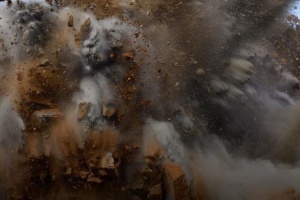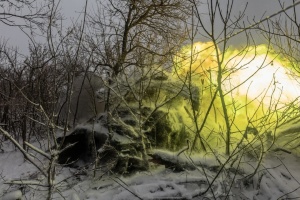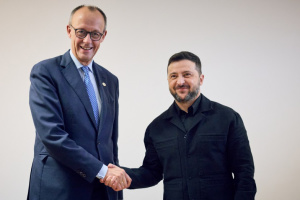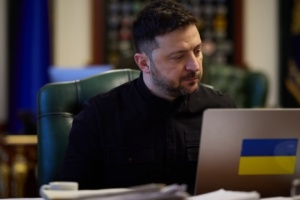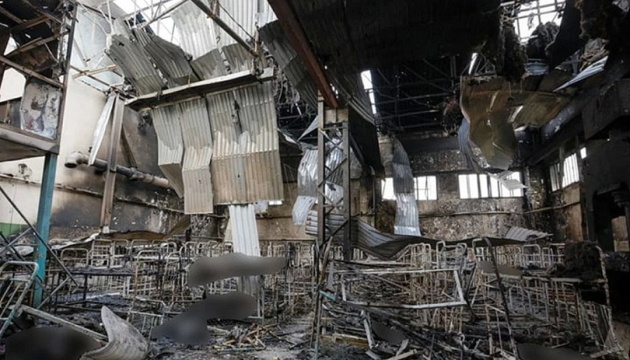
Olenivka: year after Russian terrorist attack
Last year, on the temporarily occupied territory of Donetsk Oblast, in colony No. 120 in Olenivka, on the night of July 28-29, Russians committed a terrorist attack that killed at least fifty Ukrainian prisoners of war and wounded more than 130 defenders. At that time, the unarmed and exhausted defenders from Azovstal, who had laid down their arms under the guarantees of international organizations, were ordered by the highest command of the Armed Forces of Ukraine. Many of them were held in terrible conditions of captivity in Olenivka. Some were sent to other camps. Exactly one year ago, Ukraine was shocked by the terrible news: the barracks where the prisoners were held was blown up. In essence, the Azov people were brutally murdered by Russians in violation of all agreements and conventions.
To mark the anniversary of the tragedy, Ukrinform spoke to the families of the prisoners and those presumed dead, as well as the Azov Regiment's patronage service and the Prosecutor General's Office. When will this cynical crime of mass murder of Ukrainian heroes be solved?
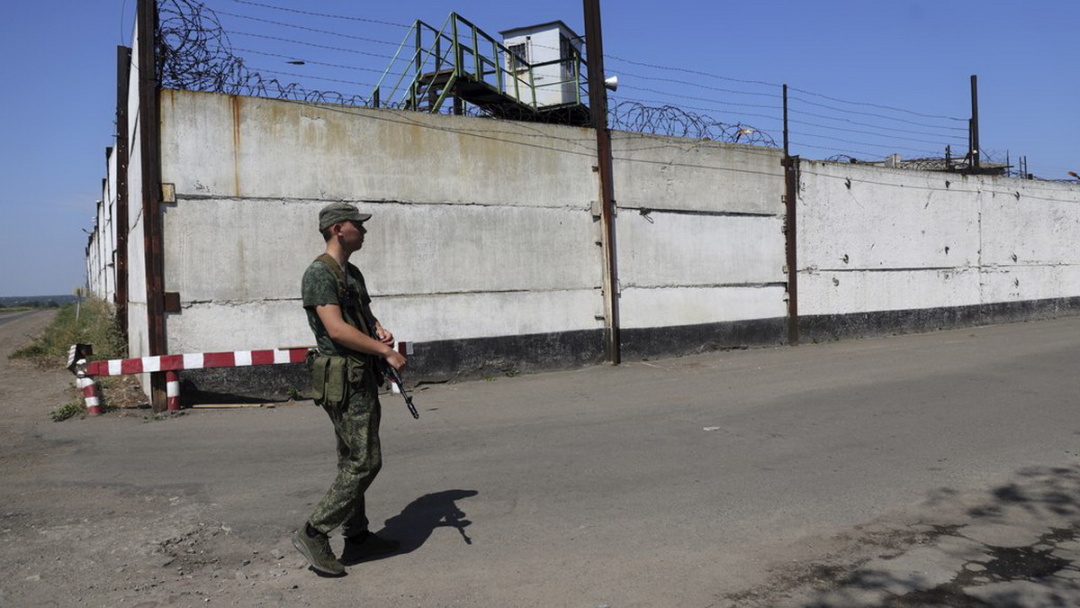
AT LEAST 53 DEAD, MORE THAN 130 WOUNDED
"Barrack 200" is the newest slang term used by the fighters who were released from captivity to describe the attack in Olenivka. "This is both the approximate number of people who were brought there for execution and a symbol of death. Because "two hundred" is how they refer to the dead," Olha Kravchenko, head of the department for work with prisoners and their families at the Azov Patronage Service, told Ukrinform. - "Ukraine learned about the attack almost simultaneously and received "Russian" lists of the dead and wounded from the Internet. The aggressor party did not contact us, did not clarify the data and did not provide new ones."
The fact that the online lists were inaccurate became clear later: when the soldiers began to return as a result of exchanges and when they began to analyze the DNA of the dead. "The lists of casualties that were immediately circulated, as it turned out, included those who most likely died on the way to the hospital. Those lists of the dead also included several people who survived and fought for their lives on the verge of death," says Olha Kravchenko. She clarifies: "I emphasize that absolutely everyone who was in that hangar was injured, 100% of people received contusions, as well as shrapnel and other wounds that were classified as light and medium in those conditions. They were not even included in the list of the "three hundred" wounded at that time.
The head of the department for work with prisoners and their families of the Azov Patronage Service knows what hell the families of the dead and injured went through all this time. "Grief, pain and despair go with them. And also the horror of powerlessness, because we have not yet succeeded in getting either a Ukrainian or an international group to examine the crime scene. Russia does not allow any structures to enter Olenivka. At the same time, the Russian Federation is still holding the direct participants of the tragedy captive, despite the norms of humanitarian law and the severe untreated injuries of Ukrainian defenders," says Ms. Olha.
"According to unofficially unconfirmed data, at least 53 Ukrainian defenders were killed and more than 130 wounded as a result of the barbaric crime. Since then, not a single international forensic expert or international organization with a reputable reputation has been allowed to visit the crime scene," comments Natalka Zarytska, head of the Women of Steel NGO. Bohdan, her husband, was in a neighboring barracks on that tragic night.
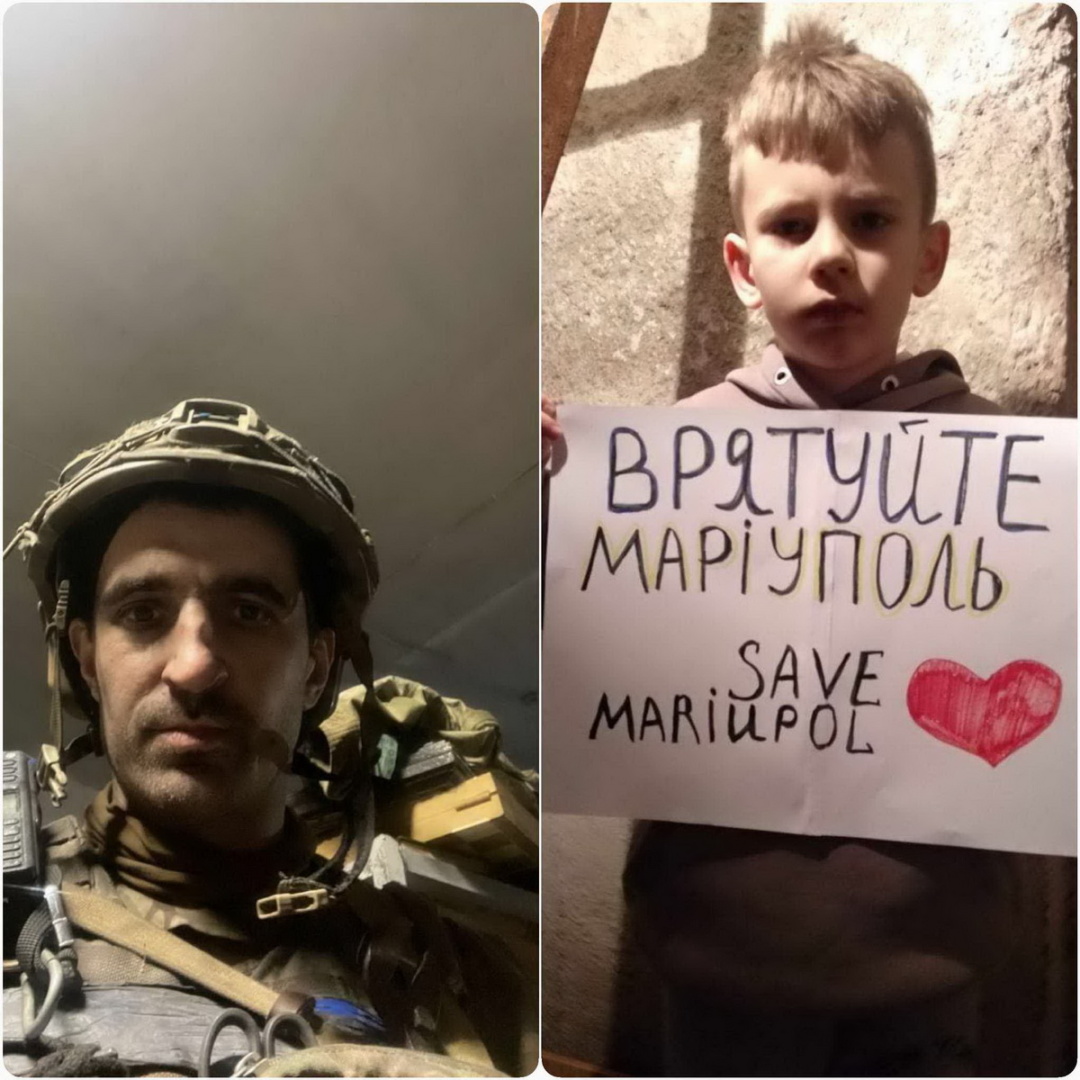
By the way, the photo of Natalka and Bohdan Zarytsky's young son with a poster he had drawn, "Save Mariupol", launched a massive campaign in defense of Ukrainian soldiers. Thousands of people shared the photo in the first day alone...
PEOPLE DO NOT BELIEVE THEY HAVE LOST THEIR MEN FOREVER
Back in October last year, the mutilated bodies of 62 Ukrainian soldiers, including those from Barrack 200, were brought back to their homeland. After DNA examinations, someone has already buried their dearest people. And there are those who do not agree to believe the examinations and still live with the last hope for a miracle.
We are talking to Ms. Ksenia, who tells us about her brother, Ihor Prokopenko, who joined the army at the age of 18. He purposefully transferred to Azov. The last time they saw each other was on New Year's Eve in 2022. He had been at Azovstal in Mariupol with his comrades since March. He last got in touch from there on April 21. He did not complain; he said that they would somehow break through; he realized that there would be no unblocking.
Ksenia's numerous appeals to government agencies and international organizations to find her brother were long and nerve-wracking. At first, there was communication with the National Information Bureau, which collects and systematizes all information about captured Ukrainian military and civilians. Next came the military unit and the Coordination Headquarters for the Treatment of Prisoners of War. The answer was: "evacuated to captivity". However, the International Committee of the Red Cross could not confirm that Ksenia's brother was in Russian captivity. Later it turned out that he left Azovstal on the evening of May 16, 2022. He was carrying a seriously wounded soldier from the plant who had been returned from captivity in September last year. This seriously wounded soldier later told us about Ihor Prokopenko...
And on May 23 this year, Ihor's mother, who is in the temporarily occupied territory, was informed via an Internet notification that genetic examination showed a 99.9% match between one of the returned bodies and her own son... The family once again wants to make sure that there is indeed a DNA match, asking the International Committee of the Missing, headquartered in The Hague (Netherlands), for a second examination. This requires a special permit from the SBU. Ksenia has not yet received a response to her personal request, which was sent in early June.
Natalia Pashnyuk-Pashneva and her family - her husband and two children, as well as the fiancée of her eldest son - decided that after the DNA test was positive, they would bury their dear one at the Berkovetsky cemetery in Kyiv (all the bodies of Ukrainian defenders returned by the Russian side are located in the capital). It happened recently, on July 4.
Yevhen enlisted for military service in 2011, served for the next ten years in Kherson, and shortly before the full-scale war, in January, he transferred to Azov. In Mariupol, he left the metallurgical plant that held the defense for 82 days on May 18 (later a video was found of him carrying a wounded man out of Azovstal) and ended up in Olenivka.
After February 24, 2022, the family was falsely informed twice by the Kherson unit that their son, a grenade launcher, had been killed. So even now, to the last, they did not want to believe that it had actually happened. For more than 10 months, the family waited for their Yevhen, who was officially listed as a prisoner of war. Although his name had been on the Russian lists of the dead from the very beginning. And then, out of the blue, in April 2023, the Coordination Headquarters said that Yevhen had died in Olenivka. On June 22, the results of the DNA examination were reported...
"Maybe Yevhen will turn up again," - says Yevhen's mother, Mrs. Pashnyuk-Pashneva. "Even though we have already said goodbye, it torments me. He called early in the morning on June 20 last year. He said that he really wanted grandma's cakes and mentioned that they drink water from a puddle... I told him that we have a front line in Velyka Oleksandrivka in Kherson region. In the garden, on the one hand, there are our Armed Forces of Ukraine, on the other - Russian troops..."
Relatives of those injured and killed in Olenivka are trying to stay together. The chat on the social network gradually grew into the Olenivka Families Community.
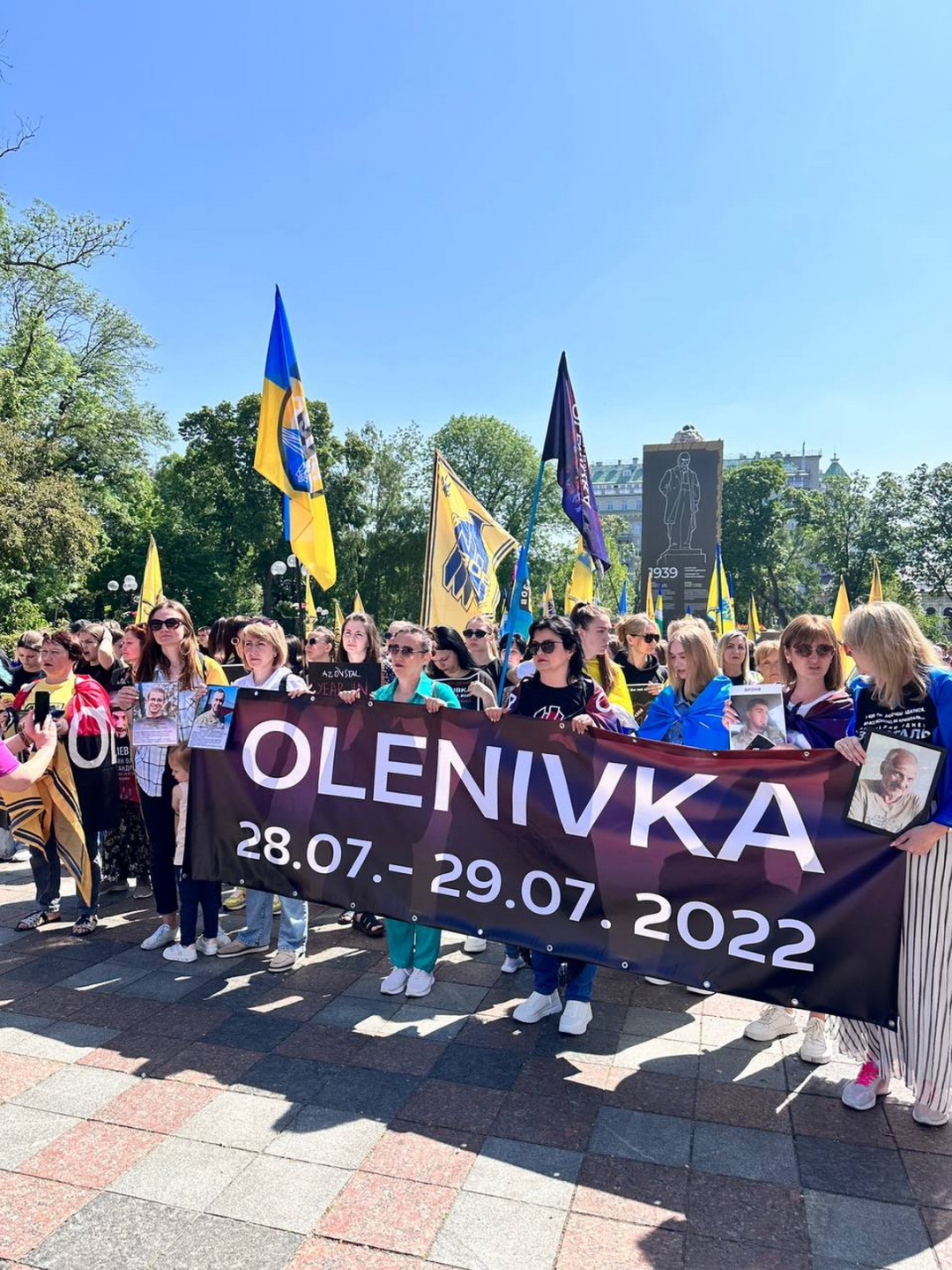
Maria Alekseevich, a representative of the community, says that her husband Serhiy, an Azov soldier, was wounded twice. He is one of those who were taken by the occupiers first to Olenivka, and then, according to Russian media, to Russia. For more than a year, the young woman has not heard her mother's voice or received letters. The last information about her husband from the released prisoners of war that he was alive was the end of September 2022. "And since then, I have had no news," says Maria.
In early May 2023, the families of the victims and those killed in Olenivka met with ICRC representatives in Geneva. However, so far, they have not felt full understanding, and most importantly, effective support from the international organization.
OFFICE OF THE PROSECUTOR GENERAL: 33 PEOPLE HAVE BEEN IDENTIFIED
The Russians lied when they accused Ukraine of shelling the Olenivska colony with HIMARS rocket launchers last July and killing about 50 prisoners of war, according to an official statement by the current head of the UN Human Rights Office, Volker Türk, on July 25. The official also noted that Russia did not provide representatives of the international organization with guarantees of safe access to the explosion site.
The UN Office was able to conduct detailed interviews with survivors of the Olenivka incident and analyze additional information available. The statement reads: "While the exact circumstances of the incident on the night of 28-29 July 2022 remain unclear, the available information and our analysis lead the Office to conclude that it was not caused by a HIMARS missile."
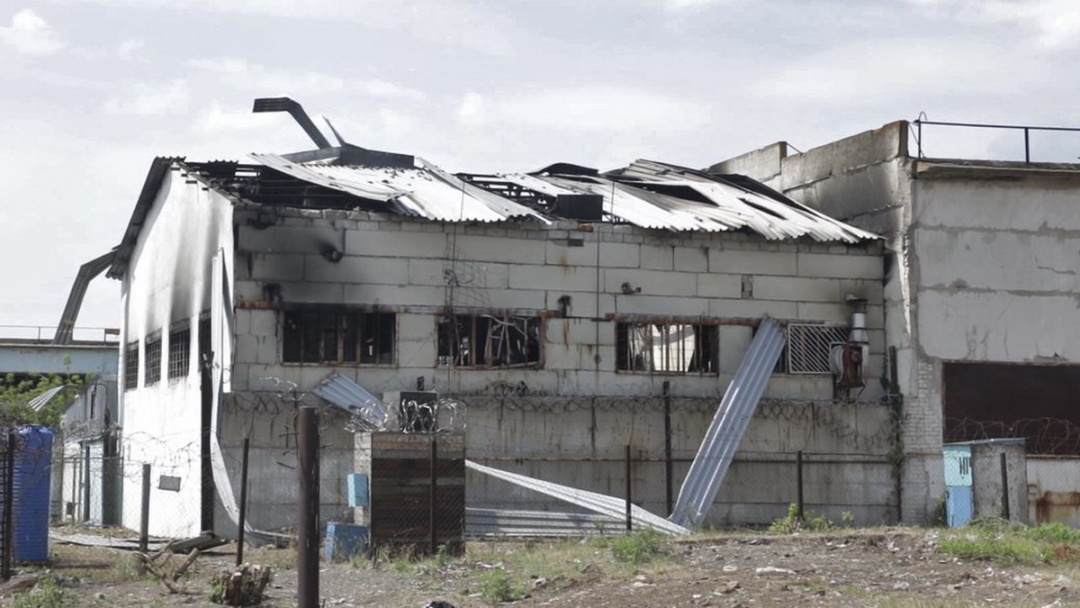
As a reminder, 25 days after the tragedy, the UN set up a team to investigate the terrorist attack in Olenivka. However, a few months later, on January 5, 2023, the mission to establish the facts of the shelling of the former penal colony in Olenivka, Donetsk region, was suspended due to the lack of necessary security guarantees and access to the crime scene. "We hope that the work of the mission will be resumed in the near future," the Information Policy Department of the Prosecutor General's Office said in a response to an Ukrinform request.
Back on July 29, 2022, the Office of the Prosecutor General registered in the Unified Register of Pre-trial Investigations information on the fact that the Russian military shelled a former penal colony in Olenivka, Donetsk region, on the grounds of a criminal offense under Part 2 of Article 438 of the Criminal Code of Ukraine - violation of the laws and customs of war. It is about the cruel treatment of prisoners of war or civilians, combined with premeditated murder. The pre-trial investigation is being conducted by investigators of the SBU Main Investigation Department.
A comprehensive examination was conducted during the pre-trial investigation. The conclusion is that the explosion was caused by the use of a thermobaric grenade launcher.
Based on the results of molecular genetic examinations, 33 of the deceased were identified and their bodies returned to the territory controlled by Ukraine. Currently, the identification of the other 24 returned bodies of the deceased, who could have been in the Olenivka convoy, is underway, and relevant examinations are being conducted.
"In addition, 13 servicemen who were returned to the government-controlled territory and were held in one of the premises of the former penal colony in Olenivka, Donetsk region, where the explosion occurred, have been interrogated as victims. Measures are currently being taken to establish the whereabouts of all persons who were present at the time of the shelling of the former penal colony in Olenivka, Donetsk region," the Prosecutor General's Office states. The pre-trial investigation is ongoing.
Representative of the Ombudsman in the security and defense sector Oleksandr Kononenko said: "We hope that the materials of this completed case will be transferred to the International Criminal Court, which will be evidence of war crimes by the Russian Federation."
Valentyna Samchenko, Kyiv
Photos provided by Women of Steel, Ksenia Prokopenko, Natalia Pashnyuk-Pashneva, Maria Alekseevich

